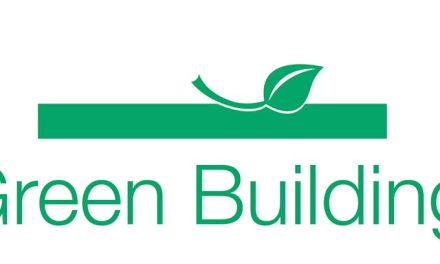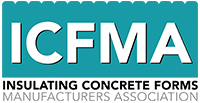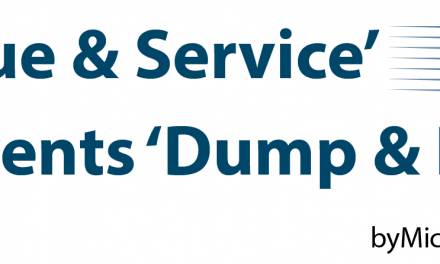ICFs are one of the fastest growing methods of residential and light commercial construction in the United States. Barely on the radarscope in the early 1990’s, ICFs now command an estimated 5.3% of the above-grade residential market as of 2005. Yet many builders, contractors, distributors and designers are still not sure how to effectively market ICFs to their customers. In this article, we’ll take a look at some of the ways to maximize your advertising, media relations and partnering opportunities.
Advertising vs. Media Relations
Any well coordinated marketing campaign should include elements of both advertising and media relations. What’s the difference? Advertising is simply paying to get your message on the air or in print at a specific time and place. With advertising, you control the content, but for a price.
When advertising, you need to carefully consider if you are reaching your desired audience, whether or not you have enough frequency in your ads, and how to pick your key message. Much of this is common sense, but it’s easy to go astray. If you’re a small builder operating in a local area, it doesn’t make much sense to advertise in national or regional publications. If you’re marketing to high-end consumers, advertise in high-end local publications, classical or all-news radio stations, on home design TV shows (with local ads only, which is possible even with “national” home improvement shows).
Media Relations is planned and regular contact with local media to increase their understanding of concrete homebuilding. With media relations, you get the value of third party credibility. It’s not difficult to build a relationship with your local media outlets. You should introduce yourself to your local real estate and/or business editors before you have a specific project or event to promote. Let them know who you are and what you represent. Ask questions – in what format do they like to receive press releases or media alerts? What are their minimum requirements for photography? What kind of deadlines do they typically work under? Put them on your mailing list, invite them to your events, and be prepared if they actually show up. Have press kits with brochures, good quality photography and other information on hand at your jobsites, trade show booths and seminars. PCA has a Guide to Media Relations with some excellent information on how to find and work with your local media outlets, write press releases and media alerts, put together press kits and pick a main message.
One important note: having spelling and grammatical errors in a press release, or supplying poor quality photography is a sure way to alienate editors and news directors. Please invest in a decent camera and some training or hire a professional photographer. Also, have multiple people proofread any written materials that you send to the media.
Whether you’re doing advertising or media relations, make sure that your message is clear. In other words, focus on just a couple of ICF benefits that are most applicable to your area. Naturally, if you’re in a hurricane or tornado-prone area, then disaster-resistance is probably your biggest selling point. Energy efficiency, particularly in regions with drastic climate changes from season to season is a major plus for ICFs in most markets. If you’re building in an urban environment, or near an airport then the noise mitigating characteristics of ICFs may be the biggest benefit. For multiple family dwellings or hotels, the fire resistance of a concrete wall system increases in importance. Don’t forget that ICFs are being increasingly viewed as a “green” building product due to their energy efficiency and longevity.
A common mistake for ICF professionals is to talk about too many benefits at once, rather than focusing on a couple of key ones. Certainly, you can talk about all of the positive ICF attributes once you’ve developed some interest
from your audience. However, in your initial advertisements or communications with the media, it’s best to focus on no more than a couple, or else your message can get confused.
Marketing Events
As an ICF builder or contractor, you have a number of opportunities to showcase your projects to the public and the media.
While the house is under construction, invite members of the local homebuilders association (HBA) or local chapter of the AIA to witness the stacking or placing of concrete into ICF forms. Other groups that might want to get a close-up look at the walls before they’re covered up are realtors, engineers, insurance agents and area building officials.
You might also consider inviting subcontractors such as drywallers, plumbers and electricians, who are often cautious about accepting work on ICF projects – until they see firsthand how easy it can be.
Of course, the media are often interested in seeing ICF construction as well – for television stations the most compelling visuals are placing the concrete into the forms. If you hold a demonstration event for any of these groups and/or the media, be sure that you have some sort of food and beverages on hand, and shelter from the elements, if necessary. Also, have plenty of literature available as well.
If you’re building in an established neighborhood, consider inviting the neighbors to a barbecue or other event at the under-construction home, so that they can understand the technology behind the strange-looking house going up in their area. You never know when they’re going to be ready to build their next home.
One other note about the jobsite – always have literature on hand, even when you’re not there to answer questions. Remember that ICF homes still tend to attract a lot of attention from people walking or driving by. Having a literature box on hand and a yard sign with your company’s name and phone number, and website address, ensures that they know where to turn to for more information. The literature box should contain your company’s brochure and a sheet with some general information about ICFs.
Many ICF builders will exhibit at local trade shows or “home & garden” shows. That can be a great way to reach a relatively large number of people, but make sure that you do it right. Make sure that you have different types of forms in your booth – straight, corners, brick ledge etc. Be certain that you can demonstrate how electrical and plumbing lines are recessed into the foam, and how drywall and exterior finishes are attached. Have plenty of literature on hand – not just your own company’s literature, but some generic literature about ICFs. You might also want a list of the addresses of finished and under construction homes that attendees take a look at after the show. At the very least, have plenty of photos of finished projects, including some that you can hand out to any media that show up at your booth.
Do you have existing homeowners that have been satisfied with your work on their ICF home? Ask them if they’ll allow you to use them as a reference. Are these same homeowners amazed by their low utility bills? Will they allow you to show copies of their utility bills to prospective clients or as part of your marketing efforts? You can’t know unless you ask them. If you’re on good terms with some of your local competitors, or if you’re a member
of a local concrete or ICF promotional group, consider joining together to have all of your booths in one area of the Convention Center.
Partnering Opportunities
One of the most valuable things that you can do as an ICF builder, contractor or distributor is to partner with a local or state concrete promotional group. Many of these organizations have ICF promotion committees, or otherwise promote concrete homebuilding.
In some cases they are able to tap into cement industry co-op advertising funds to assist with educational seminars for builders and architects, and with publicizing and promoting residential concrete products such as ICFs. To find the group nearest you, visit www.concretehomes.com and click on “local resources”.
The National Association of Home Builders (NAHB) can also be an ally
in your promotion and educational
efforts. In 2004, the Portland Cement Association teamed up with NAHB to form the Concrete Home Building
Council to educate the more than 220,000 NAHB members about cement-based building materials.
The CHBC has developed a series of ICF courses that can be taught through any of the more than 800 local HBA’s across the country. These courses include an 8-hour Introduction to ICFs for builders and general contractors, and a one- or two-day ICF installation course for superintendents and installers. Visit www.nahb.org/concrete for a description of these courses and other council activities.
The Federal Emergency Management Agency (FEMA), along with state emergency management organizations such as the American Red Cross all have a strong interest in promoting disaster-resistant construction. Check with these groups to see if they will work with you to host disaster-resistance seminars for the general public or building community. In many cases you may find that they are already conducting public awareness campaigns and would be happy to gain your support as an additional partner.
Of course, disaster-resistant products besides ICFs and other concrete wall systems will also be featured at these events, but concrete’s unique ability to resist wind-driven debris makes a strong impression on attendees.
Another valuable ally for the ICF industry is the Institute for Business & Home Safety (IBHS). IBHS is an organization consisting of most of the property and casualty insurance companies in the United States. The goal of IBHS is to “raise the bar” for residential and commercial construction; in other words to build more disaster-resistant structures and reduce the amount of claims that their members have to pay out after each hurricane, tornado, earthquake or fire. IBHS administers a program known as “Fortified for safer living.” (See story on p. 23.) Once you earn the Fortified Builder status, IBHS can assist you in your marketing and public relations efforts. For more information about IBHS, visit www.ibhs.org.
Building an ICF home for your local Habitat for Humanity chapter can be a great way to showcase ICF construction to your local building community. Remember that many Habitat volunteers are builders, architects, engineers and civic officials in their local areas. Helping to stack ICF forms on a Habitat jobsite is a great, no-risk chance for them to learn about ICF construction. A Habitat job with ICFs can also get some excellent media coverage.
There are a number of other governmental and quasi-governmental agencies interested in construction that incorporates quality, innovation and energy efficiency. These include the Department of Energy, through their Energy Star Program (www.energystar.gov) and the Partnership for Advancing Technology in Housing (PATH) (www.pathnet.org). The United Brotherhood of Carpenters offers ICF training through their National Training Center in Las Vegas, so they are another organization that might be interested in partnering with you on public open houses, trade shows or other events.
Remember that PCA, ICFA and other groups are here to help you with your marketing and promotion efforts.
Jim Neihoff is a Residential Program Manager for the PCA and is on the board of directors for the ICFA. This article is adapted from a presentation he made at the spring ICFA meeting in 2006.












